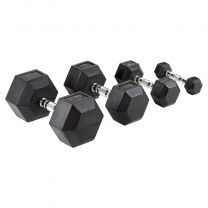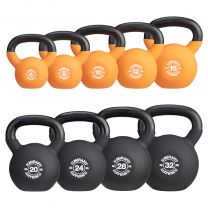Can Strength Training Prevent Injury?
Can Strength Training Prevent Injury?

Strength training helps you get stronger, it’s in the name. But there are several other benefits to strength training, one of them being injury prevention. We wanted to find out exactly how our work in the gym can have an impact on sport and performance, so we spoke to an expert in the field.
Matt Bergin is a Physiotherapist and one half of the Performance Team. He is a competitive middle- and long-distance runner, focusing specifically on 5000m and 10000m road and track events. In previous years, Matt competed for Ireland at the World University Games and also competed at other events on a European level. Over the years running led him into physiotherapy and now he mainly works with runners and triathletes.
The Performance Team was born out of the lockdown. Matt couldn’t work from the clinic during the Coronavirus Pandemic, despite the fact elite athletes and everyday people were still out running and exercising. So, the Performance Team was born, providing a remote service to people suffering from niggles, aches and pains. For example, they offer remote video gait analysis where analysis of you running allows them to identify potential areas of overload that may contribute to, or be susceptible to, injury.
We caught up with Matt to discuss the importance of strength training for injury prevention. And this isn’t just for elite athletes, but everyday runners and people who take part in sport at a recreational level.
How Important is Injury Prevention?

It’s massive. There is often the misconception that it is only the more elite runners
that must incorporate strength and conditioning type exercises into their weekly routine. But whether you are someone completing your first couch to 5k or someone looking to qualify for the Olympic Games, the risk of injury is the same, and the type of injuries I see are exactly the same regardless of someone’s level of experience or ability.
It doesn’t matter if you’re running a 2:30 marathon or a sub 5:00 marathon, you’re still pushing your body to get to the finish line and the injury risks are much the same. I see a lot of runners completing their first couch to 5k, only for them to get to 15 minutes and break down with injury. Most people don’t understand how they can get injured so quickly, but what you’ve got to appreciate is the amount of stress you put your muscles, tendons, joints, and bones under when running compared to other activities! Even if you’re relatively fit, walking regularly or attending regular spin classes neither stresses the musculoskeletal system like running.
Often people aren’t conditioned to run, they use the running to condition themselves. This is why even if someone is only looking to do a couch to 5k, strength and conditioning is still important. If you’re taking 20-30 minutes to complete a 5k you’re going to clock up somewhere around 4500 steps with some structures experiencing loads of 4-6 times your body weight. That’s a lot of stress going through your lower limbs!
What Are Some Common Causes of Sports Injuries?

One of the most common causes of injury are the training errors. The structures in our body, especially tendons and bones are sensitive to sudden changes in load. Whether that be suddenly trying to run 30 minutes with little prior running experience or more experienced runners suddenly increasing the intensity of running – both leave you susceptible to developing those overuse injuries.
We must also consider how someone moves, and how load is absorbed and transferred through the phases of running. Dysfunctional patterns here can place greater stress through certain structures, and if not conditioned to tolerate that stress, injury may occur. An old injury may also impact someone’s mechanics. That old ankle fracture could cause stiffness through the ankle, altering how it functions and where the stresses are placed.
When working with runners it’s hugely important to take a detailed history of not only their current injury but also previous issues, fractures, tears or even simply areas of the body that feel weaker, less mobile, or restricted.
What Strength Exercises Do You Recommend for Injury Prevention?

The biggest piece of advice I have for runners is to be as specific as possible when it comes to tailoring your strength and conditioning. If you’ve had problems with your foot and ankle, spend some time each week working on foot and ankle exercises such as calf raises, double or single leg hops and skips. As you progress, increase the load in line with your running. Remember, your strength training should complement the running.
If you’re someone with a history of hip or lower back issues, I’d focus on strengthening the trunk and abdominal muscles. When it comes to ‘core training’ for running it’s not about doing hundreds of crunches, but more about using your trunk to stabilise, control and resist excessive movement. Anti-extension, anti-side flexion and anti-rotation exercises are great for this! Planks, side planks, Resistance Band Pallof press and Landmines if you’ve got access to weights at home. To strengthen your hips, opt for classic glute strengthening exercises such as barbell glute bridges or a hip hitch.
Runners are often shocked at how much load I add into some exercises, but it’s essential to expose the structures to the kinds of stresses they will be placed under when running. Body weight is a good starting point though, don’t jump into the big weights too soon! But remember it’s a well-designed strength program that will increase our tolerance to those training loads and also reduce our chances of injury. Prevention is better than cure!
If you want to find out more about injury prevention, you can get in touch with Matt and the Performance Team virtually, or directly at the Witty, Pask & Buckingham Clinic if you’re local to Northamptonshire.
Written by guest author Eryn Barber.
For more content, follow us on Instagram, YouTube, TikTok, and on our official Mirafit Facebook page.
Enter your email to signup to our newsletter
Tags: Misc > Lifestyle






